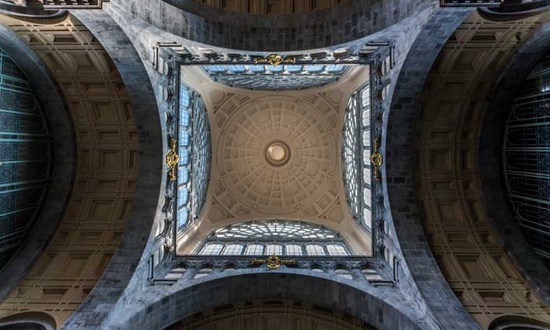A reader asked me this question:
I read your article about the dimensions of the New Jerusalem being literal, and appreciated your reasoning. I would also appreciate hearing your understanding of Revelation 21:9-10: “One of the seven angels who had the seven bowls full of the seven last plagues came and said to me, ‘Come, I will show you the bride, the wife of the Lamb.’ And he carried me away in the Spirit to a mountain great and high, and showed me the Holy City, Jerusalem, coming down out of heaven from God.”
The angel promised John to show him the bride, the wife of the Lamb, but instead, he showed him the Holy City, the New Jerusalem coming down out of Heaven. Do you think “the bride” already occupied the “New Jerusalem”? Reflect on my illustration: “Come outside, and I will show you the bride of my son.” Once you are in the driveway, I point to a red Ferrari with ribbons on the windows and flowers under the wipers.
A volunteer for our ministry and I addressed a similar question in Why Do You Say the Bride of Christ Is the Church?
As I say in that article, a people and a place are often identified virtually interchangeably, both in the Bible and in modern culture. e.g. Jerusalem or Babylon or Portland are used in the sense of a place, and also a people (“Jerusalem suffered at the hands of Babylon,” or “Portland is a liberal city”).
So is the bride of Christ the church, which is made up of people, or is it the New Jerusalem, a place where people will live? The answer is both. It’s not either/or, it’s both/and. People, and the place where those people dwell, are inseparably linked. That’s even true of God and Heaven. The prodigal son said, “I have sinned against Heaven.” Of course, that was the same as saying, “I have sinned against God.”
It is a false assumption that the bride of Christ must be either the church (God’s people) or the New Jerusalem. In fact, according to Scripture, it is both.
The person who asked me this question quoted Revelation 21:9-10. Consider these earlier verses from that same chapter:
I saw the holy city, the new Jerusalem, coming down out of heaven from God, prepared as a bride adorned for her husband.
And I heard a loud voice from the throne saying:
“Behold, the dwelling place of God is with man,
and He will dwell with them.
They will be His people,
and God Himself will be with them as their God. (Revelation 21:2-3)
We are told of the New Jerusalem coming down out of Heaven, and then immediately it says that God will dwell with His people. So again, the place and the people are inseparably linked.
Not only Jerusalem but also Israel is a people and a place. If you say it's only one of those, you miss a great deal. Similarly, we talk of churches located in Chicago or San Diego, and we can't help but envision the place they meet because they are embodied.
Is my home church, Good Shepherd Community Church, a people or a place? A people, but if you ignore the reality of the place we meet and say we are only people, you get a vague concept of our church. Sure, they are primarily a people, and if we met at another location, we would still be Good Shepherd. Yet memories are inextricably linked to places, and if you've met at one particular place for many years, that place becomes important. My memories of Good Shepherd are of people, but I see those people in my mind's eye first in the Norquist basement, second the Orient Grange Hall, third Barlow High School, fourth the original sanctuary, and fifth the current one. The people are the church, and yet where you were sent to classes and heard the Word and were baptized and married are never irrelevant.
The New Jerusalem will be about the bridegroom first, and then the bride—but the place they will live together forever will be the most important place there has ever been or ever will be.







